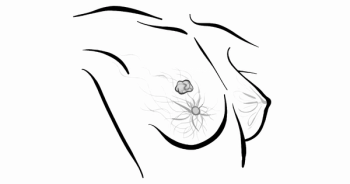
Andrew Seidman, MD: Principle Third-Line Options for Patients With Metastatic TNBC
What are the principle third-line options for patients like Christine with metastatic TNBC?
For this patient, who received both anthracycline, as well as a taxane in the adjuvant setting, and also for metastatic disease, we are confronted with a number of agents that she hasn't seen before. Until recently, it was very much the wild west, where you could recommend many different options and it was a lot of art and not a lot of science. Now we have an evidence-based approach based on the randomized, phase III trial known as EMBRACE.
In that trial, eribulin mesylate (Halaven) was shown to be superior to treatment of physicians' choice. Doctors were able to pick and choose amongst a number of commonly-used drugs, and the most commonly chosen agents were vinorelbine, capecitabine, gemcitabine, and amongst those agents were other regimens as well, but Halaven offered a survival advantage, so I think it's very hard now to argue with a prospective randomized trial showing that there's a clean winner in the third-line treatment and beyond.
Triple Negative Breast Cancer: Case 1
Christine H is a 54-year-old stay-at-home-mother who works part time as a real estate agent. Medical history is notable for hypertension (well controlled) and surgery for aortic aneurysm in 2011
In September 2013, she presented to her PCP with a right breast lump; mammogram showed a large primary breast mass and two enlarged axillary lymph nodes.
- She underwent an extent of disease evaluation, which consisted of a chest, abdomen, pelvis, and bone scan, which showed no evidence of distant metastases
- Ultrasound-guided core needle biopsy of the right breast mass revealed grade 3 invasive ductal carcinoma that was ER-, PgR-, and HER2- (triple-negative) with cytokeratin 5/6 staining and 50% Ki67 staining
- The patient proceeded to right breast mastectomy and axillary lymph node dissection in October 2013
- She had a 4.8cm invasive breast cancer and the axillary lymph node dissection showed 15 positive nodes
- She underwent adjuvant therapy with doxorubicin plus cyclophosphamide (4 cycles), followed up by paclitaxel (4 cycles) and post-mastectomy radiation
At her follow-up in May 2014, the patient showed progression of the right chest wall metastases, and several new liver lesions were detected.
- She underwent therapy with paclitaxel plus bevacizumab for 5 cycles and her disease stabilized
In December of 2014, she presented with increasing fatigue and chest pain on follow up and her CT scan was consistent with progression of the hepatic metastases, with several new lesions also noted in the lungs; her ECOG performance status (PS) at the time was 1.
- She underwent therapy with pegylated liposomal doxorubicin and had a partial response after 4 cycles of therapy. After 6 cycles of therapy, she experienced progression
- Her CBC, liver, and kidney function at the time of progression were within normal limits
- Her oncologist initiated therapy with eribulin mesylate (1.4 mg/m2 IV on days 1 and 8 of a 21-day cycle)
- She experienced a partial response. Dose was reduced to 1.1 mg/m2 after she developed grade 3 peripheral neuropathy
- Her condition improved at the reduced dose and she continues in remission after 4 cycles







































